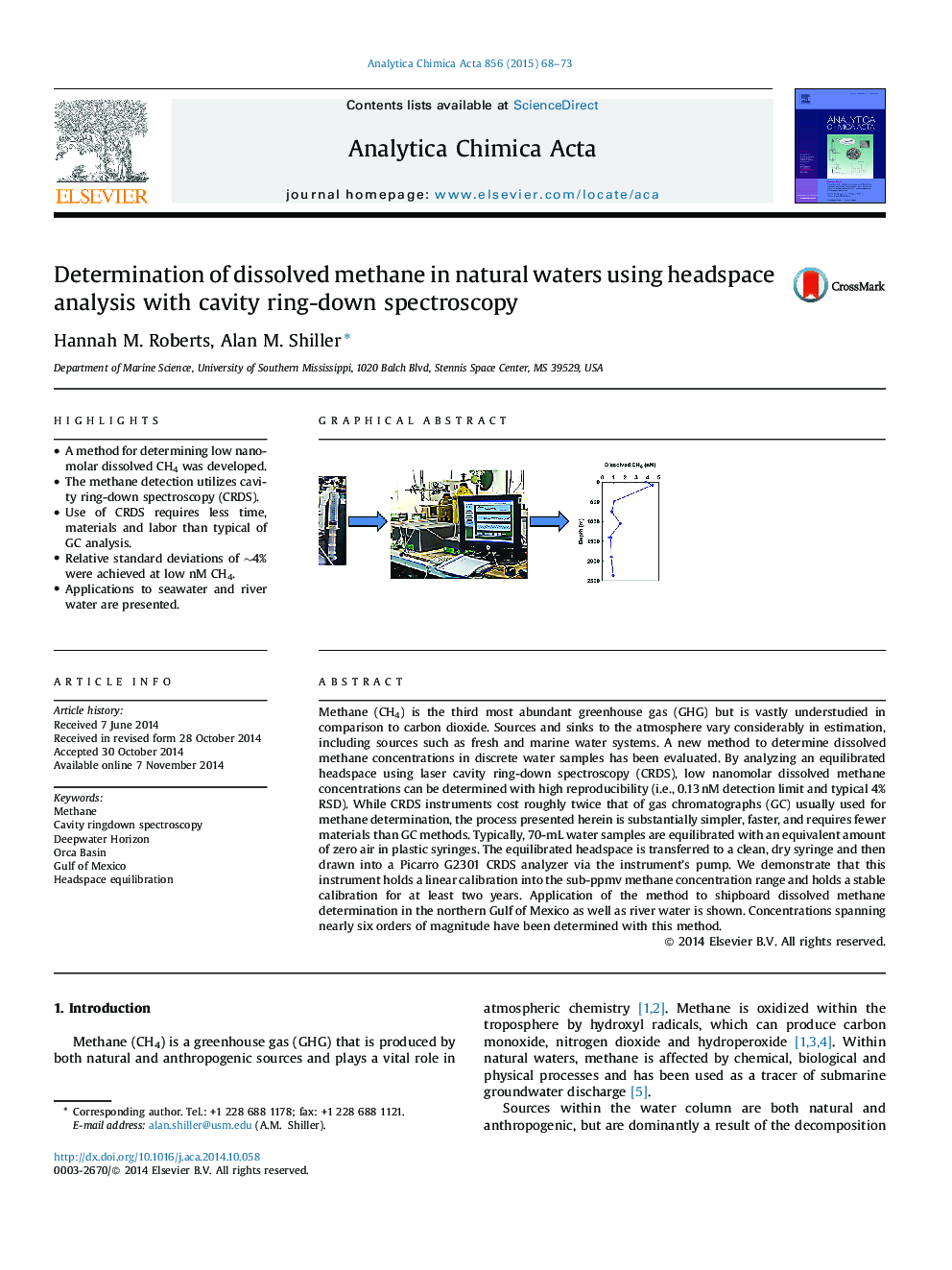| Article ID | Journal | Published Year | Pages | File Type |
|---|---|---|---|---|
| 1163758 | Analytica Chimica Acta | 2015 | 6 Pages |
•A method for determining low nanomolar dissolved CH4 was developed.•The methane detection utilizes cavity ring-down spectroscopy (CRDS).•Use of CRDS requires less time, materials and labor than typical of GC analysis.•Relative standard deviations of ∼4% were achieved at low nM CH4.•Applications to seawater and river water are presented.
Methane (CH4) is the third most abundant greenhouse gas (GHG) but is vastly understudied in comparison to carbon dioxide. Sources and sinks to the atmosphere vary considerably in estimation, including sources such as fresh and marine water systems. A new method to determine dissolved methane concentrations in discrete water samples has been evaluated. By analyzing an equilibrated headspace using laser cavity ring-down spectroscopy (CRDS), low nanomolar dissolved methane concentrations can be determined with high reproducibility (i.e., 0.13 nM detection limit and typical 4% RSD). While CRDS instruments cost roughly twice that of gas chromatographs (GC) usually used for methane determination, the process presented herein is substantially simpler, faster, and requires fewer materials than GC methods. Typically, 70-mL water samples are equilibrated with an equivalent amount of zero air in plastic syringes. The equilibrated headspace is transferred to a clean, dry syringe and then drawn into a Picarro G2301 CRDS analyzer via the instrument’s pump. We demonstrate that this instrument holds a linear calibration into the sub-ppmv methane concentration range and holds a stable calibration for at least two years. Application of the method to shipboard dissolved methane determination in the northern Gulf of Mexico as well as river water is shown. Concentrations spanning nearly six orders of magnitude have been determined with this method.
Graphical abstractFigure optionsDownload full-size imageDownload as PowerPoint slide
